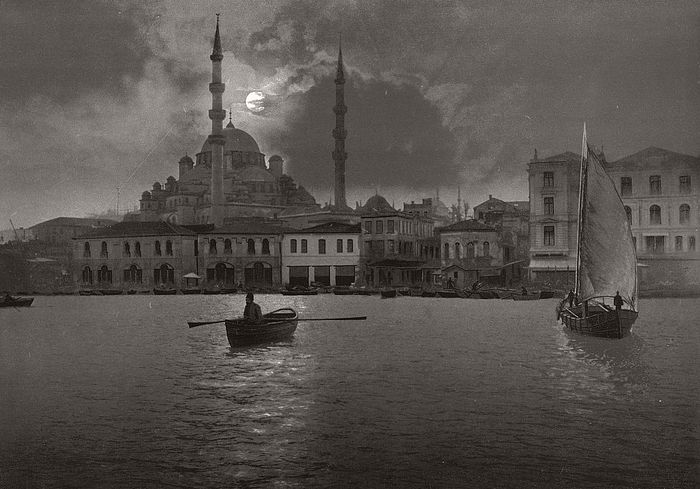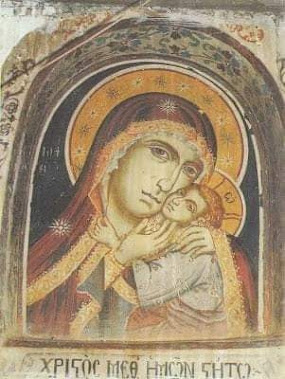Δικαιολογημένη
οργή και απογοήτευση σαρώνει τα ξένα Ορθόδοξα ιστολόγια από την στάση
του Πατριάρχη Βαρθολομαίου στο θέμα των σχισματικών της Ουκρανίας. Το άρθρο που ακολουθεί αποτελεί τμήμα μίας έκθεσης του Αγίου Ιωάννη Μαξίμοβιτς [Σαγκάη & Σαν Φρανσίσκο] προς την Δεύτερη Σύνοδο της Ρωσικής Εκκλησίας της Διασποράς (ROCOR) που είχε γίνει στην τότε Γιουγκοσλαβία το 1938. Επίκαιρο όσο ποτέ, κάνει μία αναδρομή στην ιστορία του Οικουμενικού Πατριαρχείου για να καταλήξει στην τραγική αλήθεια που όλοι γνωρίζουμε: το
Πατριαρχείο Κωνσταντινουπόλεως δεν είναι πια «στυλοβάτης της αληθείας»,
«έχει το ίδιο μετατραπεί σε κέντρο διχασμού», «διακατέχεται από μία
υπερβολική αγάπη για την εξουσία», «παρουσιάζει ένα αξιολύπητο θέαμα που
θυμίζει τις χειρότερες εποχές στην ιστορία της Έδρας της
Κωνσταντινουπόλεως».
Αυτά έγραφε από το 1938 ο Άγιος Ιωάννης Μαξίμοβιτς και 80 χρόνια αργότερα ο λόγος του παραμένει εκκωφαντικά αληθινός. Η διολίσθηση και η παρακμή του Οικουμενικού Πατριαρχείου που προκαλεί συνεχώς σκανδαλισμό, κλονίζει και διαιρεί την Εκκλησία θα πρέπει να μας προβληματίσει. Το κείμενο παρατίθεται στα αγγλικά.
Αυτά έγραφε από το 1938 ο Άγιος Ιωάννης Μαξίμοβιτς και 80 χρόνια αργότερα ο λόγος του παραμένει εκκωφαντικά αληθινός. Η διολίσθηση και η παρακμή του Οικουμενικού Πατριαρχείου που προκαλεί συνεχώς σκανδαλισμό, κλονίζει και διαιρεί την Εκκλησία θα πρέπει να μας προβληματίσει. Το κείμενο παρατίθεται στα αγγλικά.
St. John (Maximovich) of Shanghai and San Francisco.
The
following article, which is part of a report on all the Autocephalous
Churches made by Archbishop John to the Second All-Diaspora Sobor of the
Russian Church Abroad held in Yugoslavia in 1938, gives the historical
background of the present state of the Patriarchate of Constantinople.
It could well have been written today, apart from a few small points
which have changed since then. We reproduce it here to bring more
clarity into the current ecclesiastical crisis surrounding the
Ecumenical Patriarchate and the Ukraine.The primacy among Orthodox Churches is possessed by the Church of the New Rome, Constantinople, which is headed by a Patriarch who has the title of Ecumenical, and therefore is itself called the Ecumenical Patriarchate, which territorially reached the culmination of its development at the end of the 18th century. At that time there was included in it the whole of Asia Minor, the whole Balkan Peninsula (except for Montenegro), together with the adjoining islands, since the other independent Churches in the Balkan Peninsula had been abolished and had become part of the Ecumenical Patriarchate. The Ecumenical Patriarch had received from the Turkish Sultan, even before the taking of Constantinople by the Turks, the title of Millet Bash, that is, the head of the people, and he was considered the head of the whole Orthodox population of the Turkish Empire. This, however, did not prevent the Turkish government from removing patriarchs for any reason whatever and calling for new elections, at the same time collecting a large tax from the newly elected patriarch. Apparently the latter circumstance had a great significance in the changing of patriarchs by the Turks, and therefore it often happened that they again allowed on the Patriarchal Throne a patriarch whom they had removed, after the death of one or several of his successors. Thus, many patriarchs occupied their see several times, and each accession was accompanied by the collection of a special tax from them by the Turks.
In order to make up the sum which he paid on his accession to the Patriarchal Throne, a patriarch made a collection from the metropolitans subordinate to him, and they, in their turn, collected from the clergy subordinate to them. This manner of making up its finances left an imprint on the whole order of the Patriarchate’s life. In the Patriarchate there was likewise evident the Greek «Great Idea,» that is, the attempt to restore Byzantium, at first in a cultural, but later also in a political sense. For this reason in all important posts there were assigned people loyal to this idea, and for the most part Greeks from the part of Constantinople called the Phanar, where also the Patriarchate was located. Almost always the episcopal sees were filled by Greeks, even though in the Balkan Peninsula the population was primarily Slavic.
At the beginning of the 19th century there began a movement of liberation among the Balkan peoples, who were striving to liberate themselves from the authority of the Turks. There arose the states of Serbia, Greece, Romania, and Bulgaria, at first semi-independent, and then completely independent from Turkey. Parallel with this there proceeded also the formation of new Local Churches which were separate from the Ecumenical Patriarchate. Even though it was unwillingly, under the influence of circumstances, the Ecumenical Patriarchs permitted the autonomy of the Churches in the vassal princedoms, and later they recognized the full independence of the Churches in Serbia, Greece, and Romania. Only the Bulgarian question was complicated in view on the one hand of the impatience of the Bulgarians, who had not yet attained political independence, and, on the other hand, thanks to the unyieldingness of the Greeks. The self-willed declaration of Bulgarian autocephaly on the foundation of a firman of the Sultan was not recognized by the Patriarchate, and in a number of dioceses there was established a parallel hierarchy.

Κωνσταντινούπολη 19ος αιώνας.
Here the Ecumenical Patriarch could not so easily allow out of his authority the dioceses which had been torn away from Turkey, as had been done previously. There was already talk concerning certain places which from of old had been under the spiritual authority of Constantinople. Nonetheless, the Ecumenical Patriarch in 1922 recognized the annexation to the Serbian Church of all areas within the boundaries of Yugoslavia; he agreed to the inclusion within the Church of Greece of a number of dioceses in the Greek State, preserving, however, his jurisdiction over Athos; and in 1937 he recognized even the autocephaly of the small Albanian Church, which originally he had not recognized.
The boundaries of the Ecumenical Patriarchate and the number of its dioceses had significantly decreased. At the same time the Ecumenical Patriarchate in fact lost Asia Minor also, although it remained within its jurisdiction. In accordance with the peace treaty between Greece and Turkey in 1923, there occurred an exchange of population between these powers, so that the whole Greek population of Asia Minor had to resettle in Greece. Ancient cities, having at one time a great significance in ecclesiastical matters and glorious in their church history, remained without a single inhabitant of the Orthodox faith. At the same time, the Ecumenical Patriarch lost his political significance in Turkey, since Kemal Pasha deprived him of his title of head of the people. Factually, at the present time under the Ecumenical Patriarch there are five dioceses within the boundaries of Turkey in addition to Athos with the surrounding places in Greece. The Patriarch is extremely hindered in the manifestation even of his indisputable rights in church government within the boundaries of Turkey, where he is viewed as an ordinary Turkish subject-official, being furthermore under the supervision of the government. The Turkish government, which interferes in all aspects of the life of its citizens, only as a special privilege has permitted him, as also the Armenian Patriarch, to wear long hair and clerical garb, forbidding this to the rest of the clergy. The Patriarch has no right of free exit from Turkey, and lately the government is ever more insistently pursuing his removal to the new capital of Ankara (the ancient Ancyra), where there are now no Orthodox Christians, but where the administration with all the branches of governmental life is concentrated.
Such an outward abasement of the hierarch of the city of St. Constantine, which was once the capital of the ecumene, has not caused reverence toward him to be shaken among Orthodox Christians, who revere the See of Sts. Chrysostom and Gregory the Theologian. From the height of this See the successor of Sts. John and Gregory could spiritually guide the whole Orthodox world, if only he possessed their firmness in the defense of righteousness and truth and the breadth of views of the recent Patriarch Joachim III. However, to the general decline of the Ecumenical Patriarchate there has been joined the direction of its activity after the Great War. The Ecumenical Patriarchate has desired to make up for the loss of dioceses which have left its jurisdiction, and likewise the loss of its political significance within the boundaries of Turkey, by submitting to itself areas where up to now there has been no Orthodox hierarchy, and likewise the Churches of those states where the government is not Orthodox. Thus, on April 5, 1922, Patriarch Meletius designated an Exarch of Western and Central Europe with the title of Metropolitan of Thyateira with residency in London; on March 4, 1923, the same Patriarch consecrated the Czech Archimandrite Sabbatius Archbishop of Prague and All Czechoslovakia; on April 15, 1924, a Metropolia of Hungary and All Central Europe was founded with a See in Budapest, even though there was already a Serbian bishop there. In America an Archbishopric was established under the Ecumenical Throne, then in 1924 a Diocese was established in Australia with a See in Sydney. In 1938 India was made subordinate to the Archbishop of Australia.
At the same time there has proceeded the subjection of separate parts of the Russian Orthodox Church which have been torn away from Russia. Thus, on June 9, 1923, the Ecumenical Patriarch accepted into his jurisdiction the Diocese of Finland as an autonomous Finnish Church; on August 23, 1923, the Estonian Church was made subject in the same way, on November 13, 1924, Patriarch Gregory VII recognized the autocephaly of the Polish Church under the supervision of the Ecumenical Patriarchate—that is, rather autonomy. In March, 1936, the Ecumenical Patriarch accepted Latvia into his jurisdiction. Not limiting himself to the acceptance into his jurisdiction of Churches in regions which had fallen away from the borders of Russia, Patriarch Photius accepted into his jurisdiction Metropolitan Eulogius in Western Europe together with the parishes subordinate to him, and on February 28, 1937, an Archbishop of the jurisdiction of the Ecumenical Patriarch in America consecrated Bishop Theodore-Bogdan Shpilko for a Ukrainian Church in North America.
Thus, the Ecumenical Patriarch has become actually «ecumenical» [universal] in the breadth of the territory which is theoretically subject to him. Almost the whole earthly globe, apart from the small territories of the three Patriarchates and the territory of Soviet Russia, according to the idea of the Patriarchate’s leaders, enters into the composition of the Ecumenical Patriarchate. Increasing without limit their desires to submit to themselves parts of Russia, the Patriarchs of Constantinople have even begun to declare the uncanonicity of the annexation of Kiev to the Moscow Patriarchate, and to declare that the previously existing southern Russian Metropolia of Kiev should be subject to the Throne of Constantinople. Such a point of view is not only clearly expressed in the Tomos of November 13, 1924, in connection with the separation of the Polish Church, but is also quite thoroughly promoted by the Patriarchs. Thus, the Vicar of Metropolitan Eulogius in Paris, who was consecrated with the permission of the Ecumenical Patriarch, has assumed the title of Chersonese; that is to say, Chersonese, which is now in the territory of Russia, is subject to the Ecumenical Patriarch. The next logical step for the Ecumenical Patriarchate would be to declare the whole of Russia as being under the jurisdiction of Constantinople.
However, the actual spiritual might and even the actual boundaries of authority by far do not correspond to such a self-aggrandizement of Constantinople. Not to mention the fact that almost everywhere the authority of the Patriarch is quite illusory and consists for the most part in the confirmation of bishops who have been elected to various places or the sending of such from Constantinople, many lands which Constantinople considers subject to itself do not have any flock at all under its jurisdiction.

Μελέτιος Μεταξάκης (ο μασόνος)
In sum, the Ecumenical Patriarchate, in theory embracing almost the whole universe and in fact extending its authority only over several dioceses, and in other places having only a higher superficial supervision and receiving certain revenues for this, persecuted by the government at home and not supported by any governmental authority abroad: having lost its significance as a pillar of truth and having itself become a source of division, and at the same time being possessed by an exorbitant love of power—represents a pitiful spectacle which recalls the worst periods in the history of the See of Constantinople.
From Orthodox Word, vol. 8, no. 4 (45), July-August 1972, pp. 166-168, 174-175.
St. John (Maximovich) of Shanghai and San FranciscoΠηγή Orthodox Christianity









































































































Δεν υπάρχουν σχόλια:
Δημοσίευση σχολίου